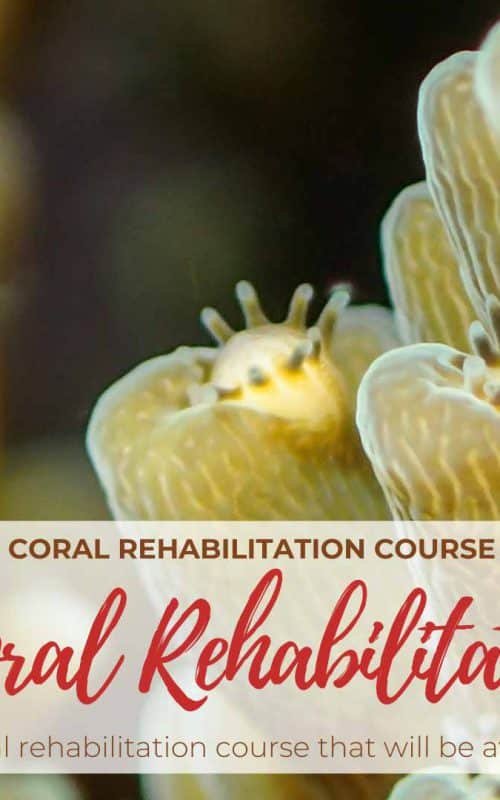Following a series of coral restoration workshops held by the Department of Marine and Coastal Resources (DMCR) last year, we were recently invited to join a workshop to review and discuss the measures, methods and implementation steps for the new DMCR Coral Reef Rehabilitation Course.
DMCR Coral Reef Rehabilitation
This two day workshop was led by the Director of the DMCRs (Department of Marine & Coastal Resources) Conservation and Restoration Office Mr Pitul Panchaiyaphum. Up until now, according to the Wildlife Preservation and Protection Act, B.E. 2535 (1992), no one is allowed to touch coral, even for restoration and rehabilitation purposes. Mr Pitul Panchaiyaphum has been working with the ministerial regulators to make a change to that law so that trained and certified personnel can work on coral rehabilitation using the approved methods.

The course is in the process of being completed and we, along with people from other Koh Tao dive centres who have already submitted proposals to the DMCR, were invited to participate in the course. The aim is to firstly, learn the allowed methods, becoming certified at student level in the process and then to also help iron out any issues that may arise and finally, to assist them in writing the course outline for future students, so we too can teach the course to our own divers in the future. This is great news for the island as this means we can work on restoring our reefs while teaching others.
Once the student level of this course is complete we have been asked to follow up with some practice alongside their ongoing project in Aow Leuk Bay. Here we will create a 20 block area, attaching fragments from the surrounding area. At this point, we will receive our instructor certificates for the course. The DMCR will then evaluate our proposal and site once more and ‘hopefully’ give us our approval to start our own coral restoration project there.

Firstly, Dr Nalinee Thongtham, their coral expert covered Coral Biology and Restoration. It is important to be able to identify the class and subclass of coral, and then differentiate between the different coral growth forms of hard coral; massive, submassive, encrusting, foliaceous, branching, table and mushroom, to be successful in a rehabilitation project.
You will need to be able to recognise the difference between individual coral species, but identifying and naming them is another story. There are over 800 species of hard coral worldwide and 300 of those are found in Thai waters. So the identification of species is not covered in this course, but there are other coral taxonomy courses for that.
Next, you need to be able to distinguish between dead and living coral and also that of unhealthy coral. There is obviously no point in trying to help coral that is already dead, and we need to leave coral that is unhealthy alone to limit any extra stress to the coral.

Coral Reproduction is next. The course covers both Asexual (Extratentacular and Intratentacular Budding) and Sexual reproduction (Brooding and Broadcasting). Learning how coral reproduces is one of the factors you need to consider when choosing a suitable environment for coral reef development. As is coral food and feeding, which is covered next.
Suitable Environment for coral reef development is then covered which means looking at several factors; light, transparency, depth, sediment, temperature, salinity, water circulation, wave action, substrate and possible human impact.
We then look at the different ways restoration can be done, by passive, active and biological restoration methods. In this course we will be concentrating on biological restoration by transplanting coral to natural substrate, hollow blocks, iron bars or artificial reefs.
The second day is for the dives, learning how to select the suitable coral fragments that could be used for transplantation onto the restoration area. Since this is natural regeneration, we need to search for fragments from around the reef area as opposed to using ones that were grown in a coral nursery. We look for new coral colonies which have started to grow on small fragments of dead coral and rock, not large enough to sustain proper growth or stability.
For the purpose of this course, we attached three fragments to each of the hollow blocks using epoxy resin, ensuring that each colony was of the same species of massive or submassive coral. In future courses we can also use other methods such as using natural crevices in the substrate or cable ties/wire for branching corals on iron bars.
When looking at previous projects around Thailand, it is so inspiring to see such a success rate. With these successes have come failures too and it is important to learn from these failures so that we do not repeat them. So obviously, there is the need for monitoring. All the work that we do must be regularly monitored so that we can keep track of both our successes and failures. This will also be a part of the new course once it formally rolls out to the whole of Thailand.

Overall it was a very exciting couple of days and we were honoured to have been able to help shape Thailand’s first official coral restoration course. Our thanks go to the DMCR and their officers who travelled to Koh Tao to teach and develop this new curriculum.
We will keep you posted once this course is available – you too could help rescue our coral reefs!





